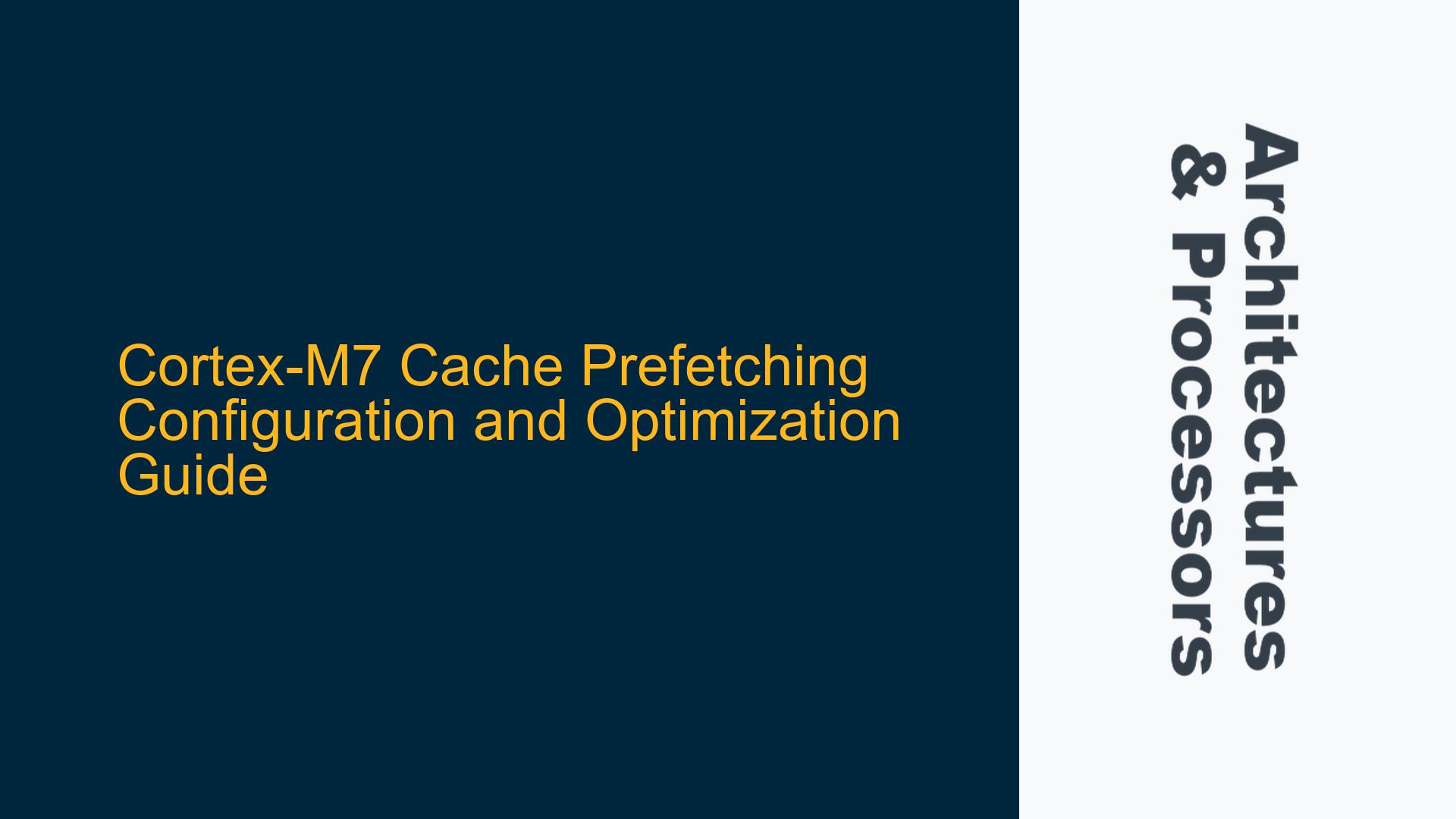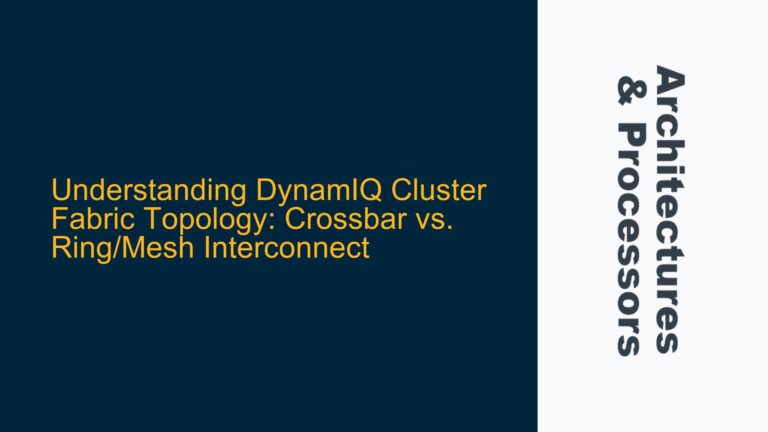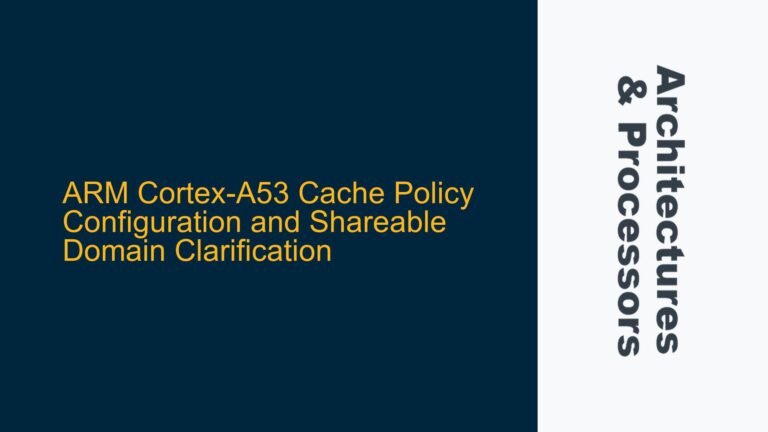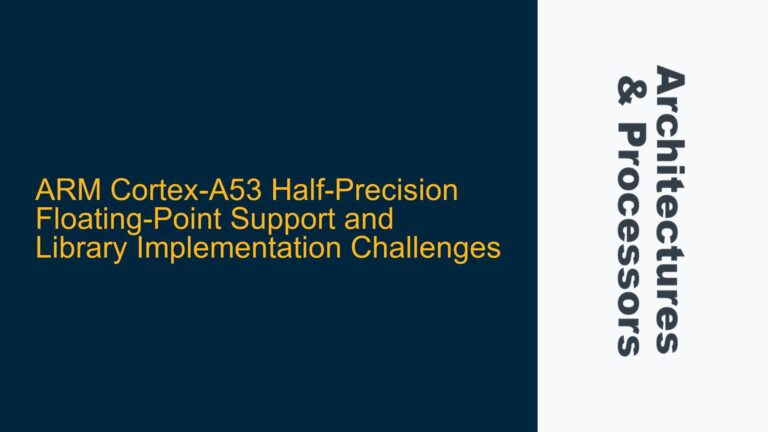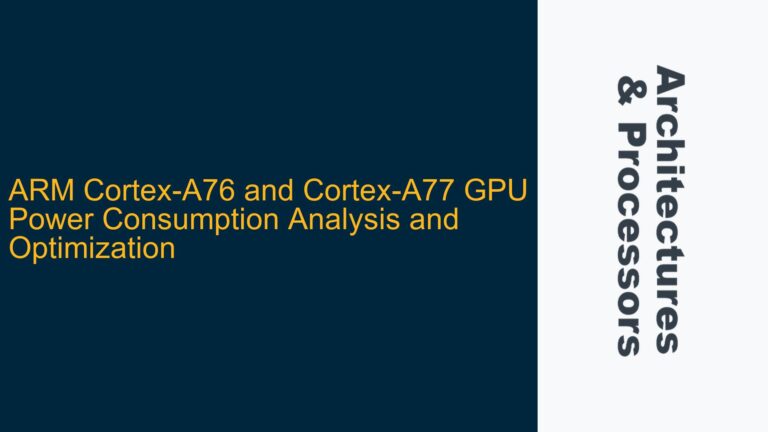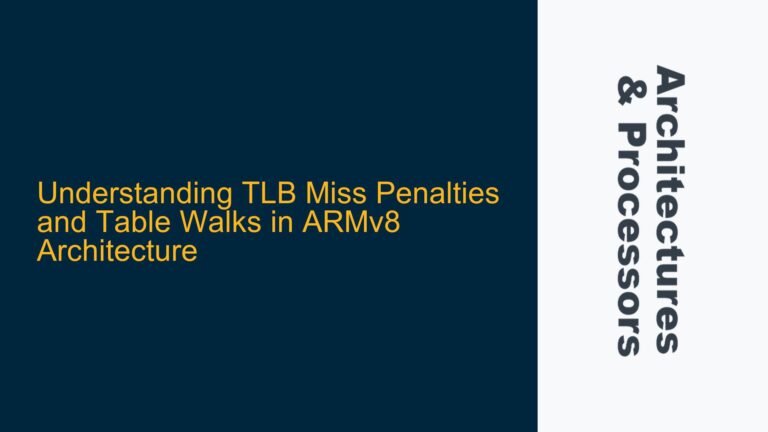Cortex-M7 Cache Prefetching Mechanism and Implementation
The Cortex-M7 processor, a high-performance embedded processor based on the ARMv7-M architecture, incorporates advanced features such as cache memory and prefetching mechanisms to enhance execution efficiency. The Cortex-M7 includes both instruction and data caches (I-cache and D-cache), which are critical for reducing memory access latency and improving overall system performance. Cache prefetching is a technique used to predict and load data or instructions into the cache before they are explicitly requested by the processor, thereby minimizing stalls caused by cache misses.
The Cortex-M7 supports software-controlled prefetching through the use of memory system hints, specifically the Preload Data (PLD) instruction. This instruction allows software to communicate expected memory usage patterns to the hardware, enabling the processor to preload data into the D-cache. However, the Preload Instruction (PLI) hint is treated as a no-operation (NOP) on the Cortex-M7, as the processor does not support instruction prefetching via this mechanism. Instead, the Cortex-M7 relies on its 4×64-bit instruction queue to prefetch instructions naturally during code execution.
The prefetching behavior of the Cortex-M7 is implementation-defined, meaning that the exact behavior may vary depending on the specific implementation of the processor. However, the architecture provides a consistent framework for enabling and utilizing prefetching mechanisms. The D-cache must be enabled for the PLD instruction to have any effect, and the cacheable memory regions must be properly configured to ensure that prefetching operates as intended.
Memory System Hints and Cache Prefetching Configuration
The Cortex-M7’s prefetching capabilities are closely tied to its memory system architecture and the configuration of cacheable memory regions. The processor uses memory system hints, such as the PLD instruction, to optimize data access patterns. These hints are particularly useful in scenarios where the software can predict future memory accesses, such as in loop iterations or data streaming applications.
The PLD instruction is used to preload a single cache line into the D-cache. This is achieved by specifying the memory address of the data that is expected to be accessed in the near future. The Cortex-M7’s memory system interprets this hint and initiates a cache linefill operation if the specified address is not already present in the cache. This mechanism is particularly effective in reducing latency for subsequent memory accesses, as the data is already available in the cache when needed.
However, the effectiveness of the PLD instruction depends on several factors, including the accuracy of the prefetching hints provided by the software and the configuration of the memory system. For example, if the memory region being accessed is marked as non-cacheable, the PLD instruction will have no effect. Similarly, if the D-cache is disabled, the processor will not be able to preload data into the cache, regardless of the presence of PLD instructions.
The Cortex-M7 also supports preloading of the Tightly Coupled Memory (TCM) during runtime and before releasing reset. TCM is a high-speed memory that is closely integrated with the processor, providing low-latency access to critical data and instructions. Preloading TCM can be particularly beneficial in real-time systems where deterministic access times are required. The processor’s documentation provides detailed guidelines on how to configure and preload TCM, ensuring optimal performance for specific use cases.
Optimizing Cortex-M7 Cache Prefetching for Performance
To fully leverage the Cortex-M7’s cache prefetching capabilities, developers must carefully configure the memory system and optimize their software to take advantage of the available prefetching mechanisms. This involves enabling the D-cache, configuring cacheable memory regions, and using the PLD instruction strategically to preload data that is likely to be accessed in the near future.
One of the key considerations when optimizing cache prefetching is the accuracy of the prefetching hints provided by the software. Inaccurate or excessive use of the PLD instruction can lead to cache pollution, where useful data is evicted from the cache to make room for preloaded data that is not actually needed. This can result in increased cache misses and degraded performance. Therefore, it is important to use the PLD instruction judiciously, focusing on memory access patterns that are predictable and repetitive.
Another important factor to consider is the alignment of memory accesses. The Cortex-M7’s cache operates on cache lines, which are typically 32 bytes in size. When using the PLD instruction, it is important to ensure that the memory addresses being prefetched are aligned to cache line boundaries. This ensures that the entire cache line is preloaded, maximizing the benefits of prefetching.
In addition to software optimizations, developers should also consider the hardware configuration of the Cortex-M7. This includes enabling the D-cache, configuring the memory protection unit (MPU) to define cacheable memory regions, and ensuring that the memory system is properly initialized before enabling prefetching. The processor’s documentation provides detailed guidelines on how to configure these settings, ensuring optimal performance for specific use cases.
Finally, developers should be aware of the limitations of the Cortex-M7’s prefetching mechanisms. While the PLD instruction can be highly effective in reducing memory access latency, it is not a substitute for proper memory access optimization. Developers should still strive to minimize cache misses by optimizing their data structures and algorithms, ensuring that memory accesses are as efficient as possible.
In conclusion, the Cortex-M7’s cache prefetching mechanisms provide a powerful tool for optimizing memory access patterns and improving system performance. By carefully configuring the memory system, using the PLD instruction strategically, and optimizing software for efficient memory access, developers can fully leverage the capabilities of the Cortex-M7 and achieve optimal performance in their embedded applications.
